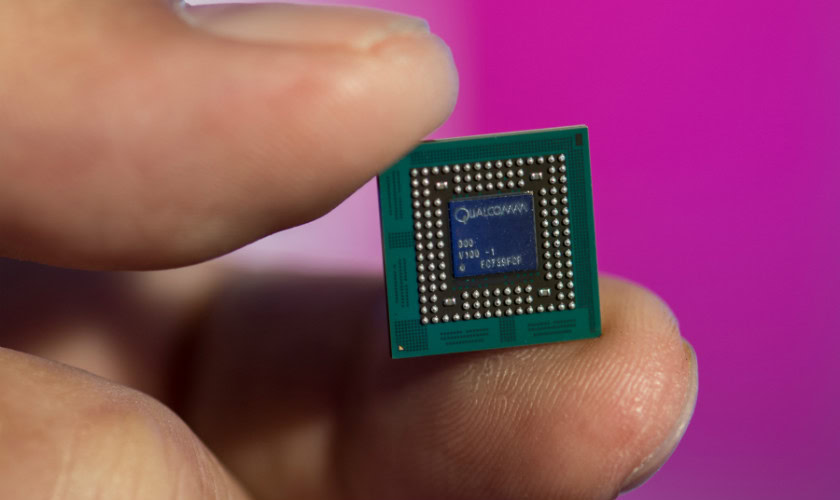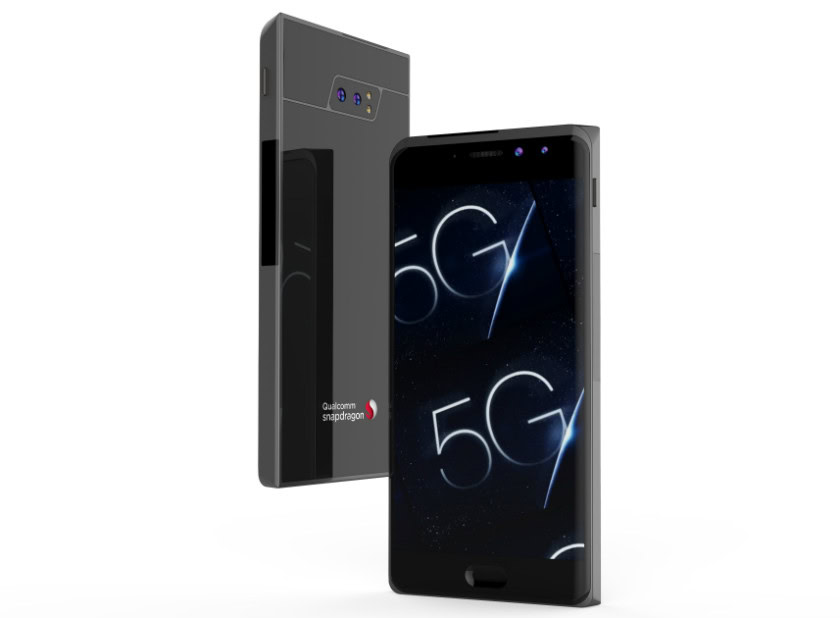Affiliate links on Android Authority may earn us a commission. Learn more.
Qualcomm leaps closer to 5G, boosts 600 MHz LTE support too
Published onOctober 16, 2017

At the company’s 4G/5G Summit taking place in Hong Kong, Qualcomm has announced the first successful test of a 5G data connection on its 5G modem chip-set for mobile devices – the X50. The chipset provider is also continuing to beef up its support for today’s 4G networks, with expanded front end to support low frequency implementations like T-Mobile’s 600 MHz Band 71 roll out in the US.
Qualcomm initially announced its X50 5G modem back in October 2016. But now paired up with the SDR051 mmWave module and making use of data over a test 28 GHz mmWave radio frequency band, Qualcomm has been able to hit speeds in excess of 1 Gbps in its San Diego laboratories, and is on the way to its 5 Gbps target speed. To achieve this speed, Qualcomm aggregated data from two 100 MHz 5G carrier bands. At full spec, the X50 supports carrier aggregation from eight 100 MHz bands.

Qualcomm states that the achievement has accelerated the industry’s timetable by about 6 months. The development should help enable meaningful 5G trials sometime in 2018, with the first network launch possibly ready as early as 2019. To prove that this date isn’t just an idealistic prediction, Qualcomm also showcased a 5G smartphone reference design, complete with mass antenna layout for high frequency 5G waves. Although this is not a reference design for OEMs, more a proof of concept showcasing that all the necessary components can fit together in a commercial phone form factor.
Speaking of smartphone use cases, Qualcomm also tells me that power performance for its 5G modem is comparable to today’s 4G modems thanks to intelligent antenna design. Data rates are expected to increase five fold, yet power consumption should be comparable due to efficiency gains from power amplifier summing for multiple antennas. Component size is also expected to shrink by 50 percent by the time commercial smartphones roll out, which is more good news for increasingly cramped smartphones.

While new high frequencies bands are necessary for 5G, improving the coverage and performance offered by low frequency 4G networks is equally as important for us users. T-Mobile has been rolling out its 600 MHz (Band 71) LTE extension in the US but the LG V30 is the only phone to support the band at the moment. To improve support in future phones, Qualcomm is extending its radio front end portfolio to provide OEMs with access to 600 MHz and similar spectrum.
Qualcomm’s antenna tuner allows for OEMs to support frequency bands below 800 MHz without having to redesign their phone antenna layouts, which is an expensive and labor intensive process. The company’s RF front end portfolio also includes power amplifier, duplexer, and filter components which are all required to tune antennas for new frequency bands. Fortunatley most of these components are supported across Qualcomm’s range of Snapdragon mobile platforms, meaning that mid range and low end handsets should quickly be able to benefit from 600 MHz spectrum too.
The end result is that companies looking to sell into the US market, and others that roll out their own low frequency bands in the future, will be able to make full use of 600 MHz network capabilities. In the US, this means that we can expect many more phones to support T-Mobile’s Band 71 next year.
Faster 4G and the first 5G products just a couple of years away? Sign me up.